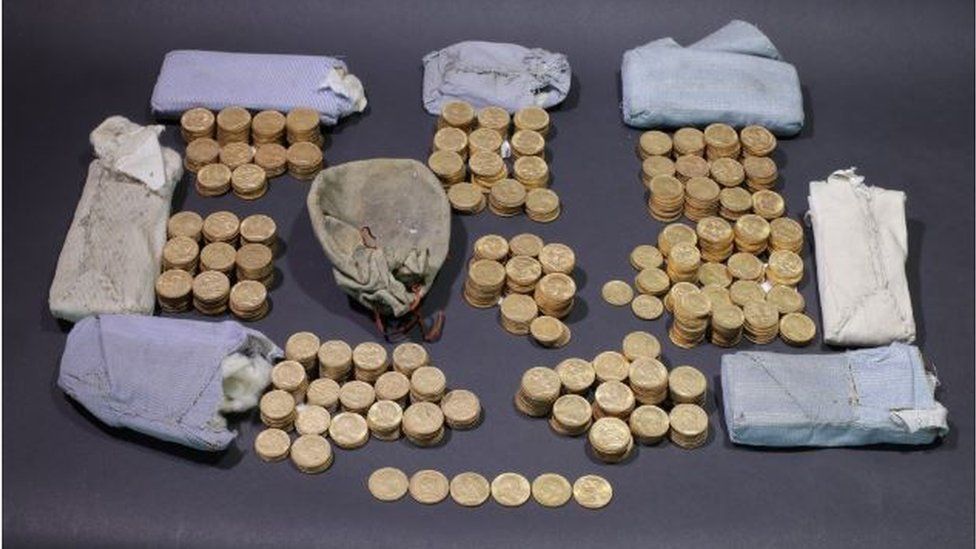
25.2.2017 900 gold coins inside the piano
Categories: Minting - Numismatics , Treasures , Calendar , Nálezy nejenom s detektorem ve Velké Británii a Irsku
A remarkable discovery was made four years ago by the English piano tuner Martin Backhouse. Inside one of these musical instruments he found a real treasure, 900 gold coins.
The piano with the treasure inside was at Shropshire University. The musical instrument was donated to the school by a couple who were downsizing their home and the piano would have been in the way. They had no idea what was inside.
The following year the school hired piano technician Martin Backhouse to take charge of the over 100 year old piano. When he first looked inside, he couldn't believe his eyes. He discovered hundreds of coins carefully hidden in seven cloth bags and a leather drawstring purse. The coins were officially declared treasure by Shrewsbury Coroner John Ellery.
It is unknown who may have hidden the coins. Maybe someone who was supposedly planning to melt them down later. An extensive investigation was conducted, and 50 people laid claim to the treasure. But none of them ended up getting the coins. No evidence was found that they belonged to them.
Most of the coins date back to Queen Victoria's reign. Of the 900 coins recovered, 633 are so-called Sovereigns, which are called coins of the kings. They are representative of the monometallism system that originated in the British Isles in the 18th century. Specifically in 1816, when gold was enacted as the sole measure of value.
According to piano technician Martin Backhouse, probably since 1906, when the piano was made, no one has paid attention to its maintenance. He himself was thrilled by the coin's discovery, as he is a fan of archaeology. "When I saw the cloth bags, I thought, what the hell. They were very nicely made of corduroy. The pouches were precisely stacked side by side to fit inside the piano," the tuner said.
The coins are almost 92 percent made of gold, with the rest being silver. The piano was made in 1906 by Broadwood & Sons of London and sold by the music shop Messrs Beaven & Mothersole in Saffron Walden, Essex. However, it is not known who bought it first.
It was not until 1983 that Graham and Meg Hemmings became the owners. The couple bought the instrument so that their four children could learn to play. And, as mentioned earlier, they donated it to the university to renovate their house. The treasure was valued at £500,000.



Sources: www.theguardian.com, www.bbc.com, www.pokladnice-minci.c
The article is included in categories:
- Archive of articles > Minting - Numismatics
- Archive of articles > Treasures
- Archive of articles > Calendar
- Archive of articles > Archaeology > Finds and rescue research abroad > Nálezy nejenom s detektorem ve Velké Británii a Irsku
Post
Sáfra, já před pár lety daroval starý klavír 
 Asi jsem ho měl vevnitř pořádně omrknout
Asi jsem ho měl vevnitř pořádně omrknout 
Jo měl jsi ho rozřezat a když by tam nic nebylo tak teprve darovat 
Poznávám klavír, na který jsem se jako malý učil hrát !!!! Já si už tehdy říkal, že vyluzuje opravdu zlaté tóny 
 ...
...








